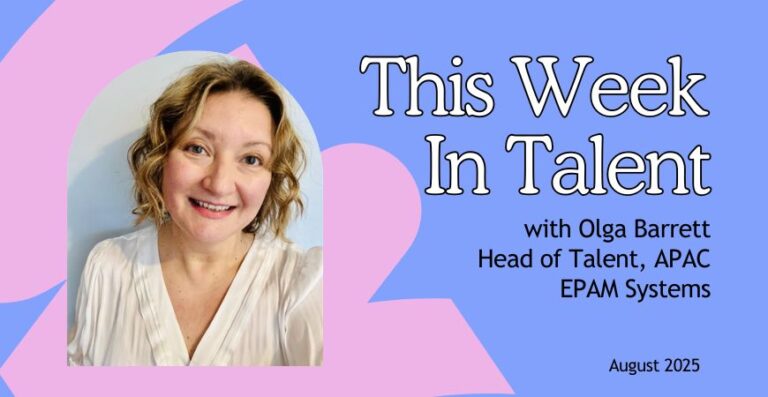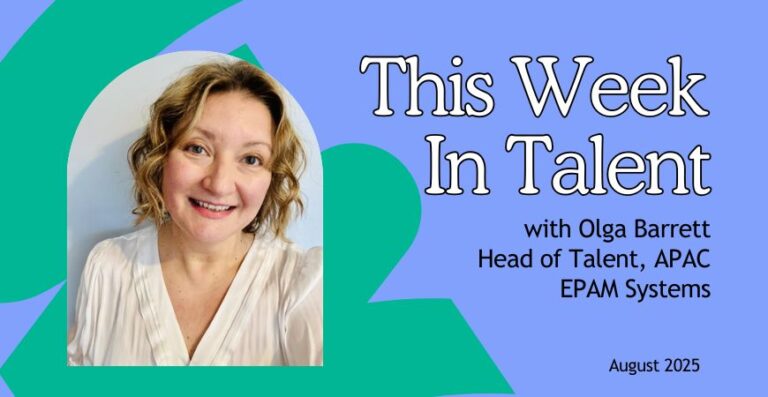Reclaiming Talent Advisory Through Strategy and AI
At the recruiTECH CEE Conference in Budapest, something shifted.
Following Kevin Wheeler’s keynote, “When Bots Hire Better Than You: The End of the Traditional Recruiter Era,” there was a clear sense of discomfort in the room. For many Talent Acquisition professionals, it felt like the ground was shifting, and their careers as they understood them were coming to an end.
Rather than ignore that tension, I wanted to try to:
- Turn uncertainty into action.
- Give people back a sense of agency.
- Help them see they have a say in what comes next.
Based on the above, I set an unplanned challenge for the Aligned to Achieve workshop that was held on the second day of the conference. I wanted the delegates to stop seeing themselves as recruiters, and start thinking like strategists shaping and transforming their Talent Acquisition functions.
We used the Aligned to Achieve (A2A) framework to explore how Talent Acquisition could move from transactional tasks to strategic impact as strategic partners. The shared new goal for the A2A exercise was to strategise how to :
“Transition to an AI-driven Talent Advisory function to add value and improve efficiency.”
This wasn’t about resisting AI. It was about reshaping our role alongside it.
Using A2A , the participants discovered the following insights and actions they could take back and try. Four concurrent A2A teams was strategising and each received a detailed report from the A2A application. The key actions from this report are summarised below:
Build Talent Advisory Capability
- Teams recognised that the shift to advisory isn’t just a rebrand, it’s a skillset transformation.
- Develop business acumen beyond hiring transactions by understanding the options for how work may be performed.
- Understand what soft skills the TA teams require to drive an Advisory approach.
- Lead conversations around Build, Buy, Borrow, Bot, and Augment with the business.
- Apply strategic frameworks such as predictive analytics and cultural alignment in hiring.
- Merge traditional recruiting with advisory disciplines like cost/benefit analysis, workforce planning, and internal mobility strategy.
Implement and Train on AI Tools
- Rather than fear AI, participants leaned into it, seeing it as an accelerant, not a threat.
- Deliver comprehensive AI training programs for TA teams to use in an Advisory way.
- Use AI to drive measurable outcomes such as improved time-to-fill, enhanced forecast accuracy, and better hiring quality.
- Pursue smart partnerships with vendors to ensure tailored implementation and high tool engagement.
Engage Executives to Drive Change
- AI transformation can’t succeed without executive buy-in, and participants knew it.
- Create structured communication plans to bring leadership proactively on the Advisory journey.
- Use data-driven business cases to demonstrate value.
- Identify leadership turnover as a risk, and create continuity through succession planning and strategic alignment sessions.
Operationalise the Strategy
- It wasn’t just about strategy; it was about embedding advisory in daily actions.
- Link operational TA activities directly to business strategic goals.
- Refine role clarity across Talent Advisory and the People Function.
- Run vision-setting workshops with the business to ensure ongoing alignment and shared ownership.
Conclusion: Strategy provides Agency
The biggest breakthrough wasn’t about tools or metrics; it was creating strategy that gave people their agency back. By stepping into the mindset of a strategist, TA professionals moved from feeling passive about the future to actively shaping it.
AI may change how we work, but it doesn’t decide why we do what we do. When we lead with purpose, clarity, and strategy, we reclaim our role—not just as recruiters, but as business partners who drive real impact.
If you want understand more about Aligned to Achieve or uplifting your Talent Acquisition teams to be Talent Advisors please contact Trevor Vas [tvas@talentapplications.com; +61438 340 077].







